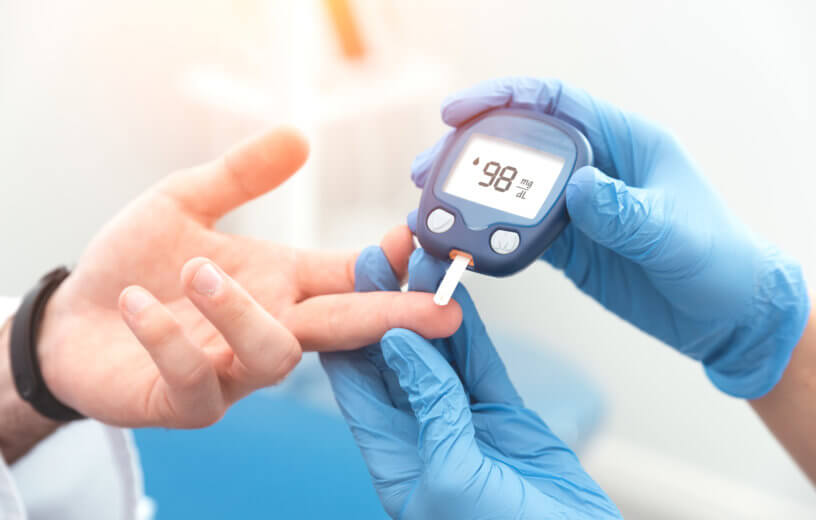DÜSSELDORF, Germany — COVID-19 patients now have another thing to worry about after their infection — type 2 diabetes. A new study reveals people suffering from a mild case of coronavirus still ended up at higher risk of developing the condition.
An analysis of the health records from more than 1,000 German doctors found people with mild symptoms of COVID-19 had a 28-percent higher risk of developing type 2 diabetes compared to patients with other types of viral respiratory infections.
Researchers have been probing this link in studies related to “long COVID,” the growing number of symptoms patients experience months after their infection. The CoviDiab registry, which scientists set up to investigate links between COVID and diabetes, has also been investigating this phenomenon.
What’s the connection?
Study authors say diabetes screenings for recovered coronavirus sufferers should become standard procedure in light of these new findings. Earlier research uncovered that the novel virus may damage beta cells which produce insulin, either by killing them or changing the way they work, causing a rise in blood sugar levels.
The link could also be the result of tissues becoming less reactive to insulin because of inflammation. Physical inactivity during the pandemic could even play a part, the team adds. The results could explain why new onset hyperglycemia and insulin resistance cases are emerging among virus victims with no prior history of diabetes.
However, it remains unclear whether these changes are just a temporary blip or whether people recovering from coronavirus are at a higher risk of developing chronic diabetes. This confusion is compounded by the fact there are few studies which probe the prevalence of diabetes in people after a mild case of COVID.
How bad is this diabetes problem?
During the new study, researchers looked at the records of 35,865 Germans testing positive for COVID between March 2020 and January 2021. They compared them with a group of patients who did not catch the virus but instead developed other respiratory infections.
The team also matched these individuals based on sex, age, health insurance coverage, the month they were sick, and comorbidities including obesity, high blood pressure, high cholesterol, and heart attack or stroke risk. Study authors also used models to calculate incidence rate ratios for type 2 diabetes and other forms of diabetes.
The study excluded people with prior history of coronavirus or diabetes and those using corticosteroids within 30 days. Researchers followed up with COVID patients 119 days after their infection and after 161 days for people with other illnesses. The percentage of people hospitalized for their condition was roughly the same in both groups (3.2% among COVID patients and 3.1% in the control group).
New cases of diabetes were more common in people testing positive for COVID-19 than for those with the other illnesses. Overall, 15.8 patients for every 1,000 people developed diabetes after having COVID in comparison to 12.3 patients in the control group.

Know the signs you might be diabetic
While type 2 diabetes is not likely to be a problem for the vast majority of people with mild COVID, the researchers say anyone recovering should be aware of the signs and symptoms of diabetes. These include fatigue, frequent urination, and increased thirst. People should seek treatment right away if they experience any of these, the researchers urge.
“COVID-19 infection may lead to diabetes by upregulation of the immune system after remission, which may induce pancreatic beta cell dysfunction and insulin resistance, or patients may have been at risk for developing diabetes due to having obesity or prediabetes, and the stress COVID-19 put on their bodies speeded it up,” says lead study author Professor Wolfgang Rathmann in a media release.
“Since the COVID-19 patients were only followed for about three months, further follow-up is needed to understand whether type 2 diabetes after mild COVID-19 is just temporary and can be reversed after they have fully recovered, or whether it leads to a chronic condition.”
“The risk of abnormally high blood sugar in individuals with COVID-19 is most likely a continuum, depending on risk factors such as injury to beta cells, an exaggerated inflammatory response, and changes in pandemic-related weight gain and decreased physical activity,” adds co-author Professor Oliver Kuss.
The findings are published in the journal Diabetologia.
South West News Service writer Gwyn Wright contributed to this report.
